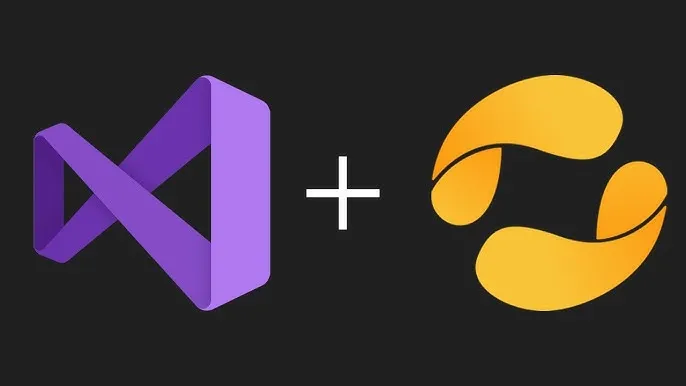

Do you use C++?
Do you struggle with maintaining dependencies for your projects?
Is it taking too much time to setup your C++ development environment setup?
If YES, then consider that your development workflow is going to become smooth after reading this post.
One of the things where we bang our heads when dealing with C++ is managing third party dependencies that we use in our projects. Be it a seasoned user or a novice, everyone must have tackled this issue somewhere at sometime using different ways.

But is there a thing as which one’s the “best” way?
Of course, there isn’t, but anything that makes me not bang my head against the table, I would consider it a better way. And this is where we’ll be talking about Package Managers, and specifically about vcpkg.
vcpkg#
vcpkg ↗ is a package or dependency manager for C++. It’s very unfortunate that there is no official package manager for C++ at its dawn. I am not sure if the concept of “package managers” even existed.
Installation#
It’s pretty easy actually.
We’ll be focusing on GNU/Linux installation entirely. This applies for usage as well. I’ll be using Debian 12. But 90% of the time, it’s pretty much the same in Microsoft Windows.
Clone the repo.
git clone https://github.com/microsoft/vcpkg.gitRun the script
cd vcpkg && ./bootstrap-vcpkg.shYou can add -disableMetrics as an argument to the shell script, if you don’t want Microsoft to spy on you.
Then if you want to run vcpkg from anywhere in your shell, you can add the PATH to your .bashrc or profile file.
export VCPKG_ROOT=/path/to/vcpkg
export PATH=$VCPKG_ROOT:$PATHAfter this, you can probably run vcpkg from any directory.
Usage#
Now to come to the part where we actually use vcpkg in our C++ project. I’ll use a demo project.
Demo Project#
We will be using fmt ↗ library to print something.
main.cxx
#include <fmt/core.h>
int main() {
fmt::print("Mitochondria is the powerhouse of the cell!\n");
return 0;
}And to build this project, we’ll be using CMake.
So, our initial project directory would look like this.
demo/
├── CMakeLists.txt
└── main.cxxNow from our demo directory, do
vcpkg new --applicationThis would create two new files in our demo directory.
vcpkg.json- The file where we define our dependencies.vcpkg-configuration.json- The file where we define howvcpkgbehaves, such as which custom registry to use etc.
The above way of initialising & using vcpkg is called as Manifest Mode.
There are 2 modes generally:
- Classic
- Manifest
We’ll be using Manifest mode throughout this post, because it is BETTER!
Now, to add a dependency to our project, which is fmt:
vcpkg add port fmtYou can search for many packages at https://vcpkg.io/en/packages ↗.
Now, if you open that vcpkg.json file, you can see that the dependency we added is present.
{
"dependencies": [
"fmt"
]
}CMakeLists.txt#
Make sure you have cmake installed beforehand along with something like make or ninja. Since this is a small demo project, we can have the following in our demo project.
CMakeLists.txt
cmake_minimum_required(VERSION 3.12)
project("demo")
find_package(fmt CONFIG REQUIRED)
add_executable(demo "main.cxx")
target_link_libraries(demo PRIVATE fmt::fmt)Now, obviously, when you run this:
cmake -S . -B buildyou’ll be getting an error.
Now to use vcpkg with CMake, we need CMake to use the vcpkg CMake toolchain file (vcpkg.cmake) when we configure our CMake against our CMakeLists.txt file.
We can do this by specifying the path to the toolchain file using CMAKE_TOOLCHAIN_FILE to pass the path to the vcpkg.cmake file. This can be done in many ways. But for now, we will use this as an argument with the CMake command.
Delete the existing build directory. Then, do
cmake -S . -B build -DCMAKE_TOOLCHAIN_FILE=$VCPKG_ROOT/scripts/buildsystems/vcpkg.cmakeNow this would actually use vcpkg to build the dependencies specified, and at the end it also shows how to utilize the dependency in your CMakeLists.txt file.
The package fmt provides CMake targets:
find_package(fmt CONFIG REQUIRED)
target_link_libraries(main PRIVATE fmt::fmt)
# Or use the header-only version
find_package(fmt CONFIG REQUIRED)
target_link_libraries(main PRIVATE fmt::fmt-header-only)After this configuration, we can try building.
cmake --build buildThis above command would probably output the following:
-- Running vcpkg install
Detecting compiler hash for triplet x64-linux...
Compiler found: /usr/bin/c++
All requested packages are currently installed.
Total install time: 1.12 us
The package fmt provides CMake targets:
find_package(fmt CONFIG REQUIRED)
target_link_libraries(main PRIVATE fmt::fmt)
# Or use the header-only version
find_package(fmt CONFIG REQUIRED)
target_link_libraries(main PRIVATE fmt::fmt-header-only)
-- Running vcpkg install - done
-- Configuring done
-- Generating done
-- Build files have been written to: /home/mito/demo/build
[ 50%] Building CXX object CMakeFiles/demo.dir/main.cxx.o
[100%] Linking CXX executable demo
[100%] Built target demoLooks like the binary demo was built. Let’s try running it.
./build/demoMitochondria is the powerhouse of the cell!It works!
Now this is far better than manually downloading the source code of the library, building it, using the header files in your src, etc..